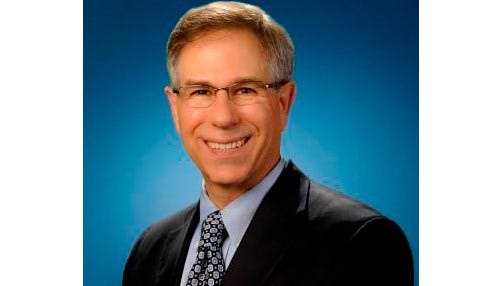To Kick Indiana’s Smoking Habit, Give Patients a Full Continuum of Care

Subscriber Benefit
As a subscriber you can listen to articles at work, in the car, or while you work out. Subscribe NowSmoking is not just a deadly threat to our families, neighborhoods and communities; it’s also a menace to our economy. Indiana policymakers, civic leaders, employers and health care providers recently convened in Indianapolis for the Evening of Promise gala, an annual event of the American Lung Association to celebrate a shared commitment to improving health and reducing the burden of disease associated with tobacco use.
Among the evening’s honorees was CVS Health, the national drugstore chain that made headlines in 2014 when it announced it would pull all cigarettes and tobacco products from its shelves. A recent study commissioned by the retailer found that in the nearly two years since its decision, cigarette sales have decreased by one percent across all retailers in 13 states – including Indiana, which experienced one of the most significant drops in smoking habits across the board.
One percent may not seem like much of a dent, but when considering the pervasiveness of adult smoking, it’s a promising start. And it’s especially relevant in Indiana, where tobacco use remains the leading preventable cause of death and claims more than 11,100 lives annually.
Tobacco use costs the state over $2 billion annually in health care bills, including $487 million in Medicaid payments. That’s $15.90 for every pack of cigarettes sold across the Hoosier State, according to calculations by the State Department of Health.
Fortunately, there are many initiatives underway in Indiana to raise awareness about the risks of tobacco, while emphasizing prevention. These efforts are just the beginning, but they’re working; data show a sharp decline in smoking prevalence from 2011-2013.
What’s more, cigarette consumption—a leading indicator of smoking behavior—is also trending steadily downward. Retailers like CVS, who have effectively taken the convenience out of purchasing cigarettes, have shown that limiting access can have a huge influence in the sales of tobacco products.
While access and awareness haven proven to be hugely successful in stopping smoking habits before they start, we must also consider what our state is doing to help the nearly one in four Hoosier adults who already identify as smokers—and how our health care providers are working to help them affordably detect and treat smoking-related diseases like lung cancer, chronic obstructive pulmonary disease (COPD) and heart disease.
We know that more Hoosiers die of lung cancer than breast, prostate and colon cancer combined, due in large part to the fact that 84 percent of people with the disease are diagnosed after the cancer has already spread. At St. Vincent, we’re committed to reversing this trend by offering $99 spiral CT lung scans that can help people at the highest risk for cancer detect the disease when it’s most treatable and curable.
What’s more, we’re responding to the need for a full continuum of care via our Tobacco Management Center—a hospital-based, nurse and pharmacist-driven smoking cessation program offered throughout the communities in which we operate across Indiana. Through the Center, our patients access the full spectrum of smoking cessation programming. As an added benefit, participants also receive a free test to determine if they are at risk for COPD, a smoking-related lung disease that too frequently goes undetected.
In addition, through the St. Vincent American Lung Association Airway Clinical Research Center, one of 18 centers in the largest network of airway research facilities in the world, we provide state-of-the-art clinical research on COPD.
We don’t offer these programs because they’re particularly profitable—rather, we do so to make good on a promise that four Daughters of Charity made when they started a hospital in Indianapolis over 128 years ago. With just $34.77 between them, these women paved the way for a culture of care in Indiana. In order to tackle stubborn, yet entirely preventable issues like smoking, we have to return to a philosophy that treats the whole patient and walks with them toward a new, healthier lifestyle.
As a member of Ascension, the nation’s largest not-for-profit Catholic health care system, we follow the call to action of health care that works, health care that is safe and health care that leaves no one behind.
And so we need a truly comprehensive approach to health care—one that merges advocacy, education and research to prevent, treat and keep patients healthy, particularly those at risk for smoking-related illnesses. To yield the best results, our policymakers, health care providers, and employers must answer the call for a robust and sustained effort that puts the health outcomes of patients at the center.
That means our elected officials must continue their commitment to policy that provides constituents with the health care access and tools they need to change their personal behavior and provides researchers with the resources they need to develop new mechanisms for improving treatment.
It means employers must take a more active role in creating a culture of health by ensuring that workplaces are smoke-free—an initiative found to not only curb smoking behavior, but also help businesses save money, according to the Surgeon General’s 2014 Report. And it means health care providers must help end smoking by making wellness and preventive measures available to more Hoosiers at a better value.
We’ve known the risks and deadly effects of smoking for more than 50 years. It’s time for Indiana’s healthcare providers, businesses, local government, schools, social service providers, civic organizations, and individual citizens to band together and help Indiana kick its smoking habit for good.
Dr. Michael Busk is system executive at St. Vincent Health, Wellness & Preventive Institute.
